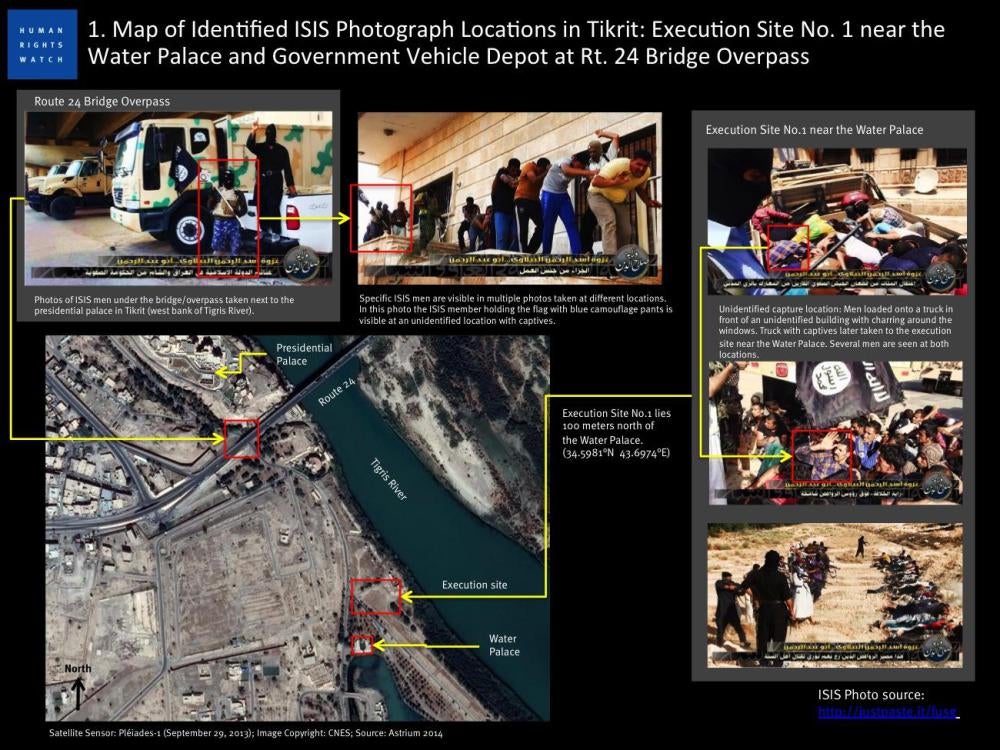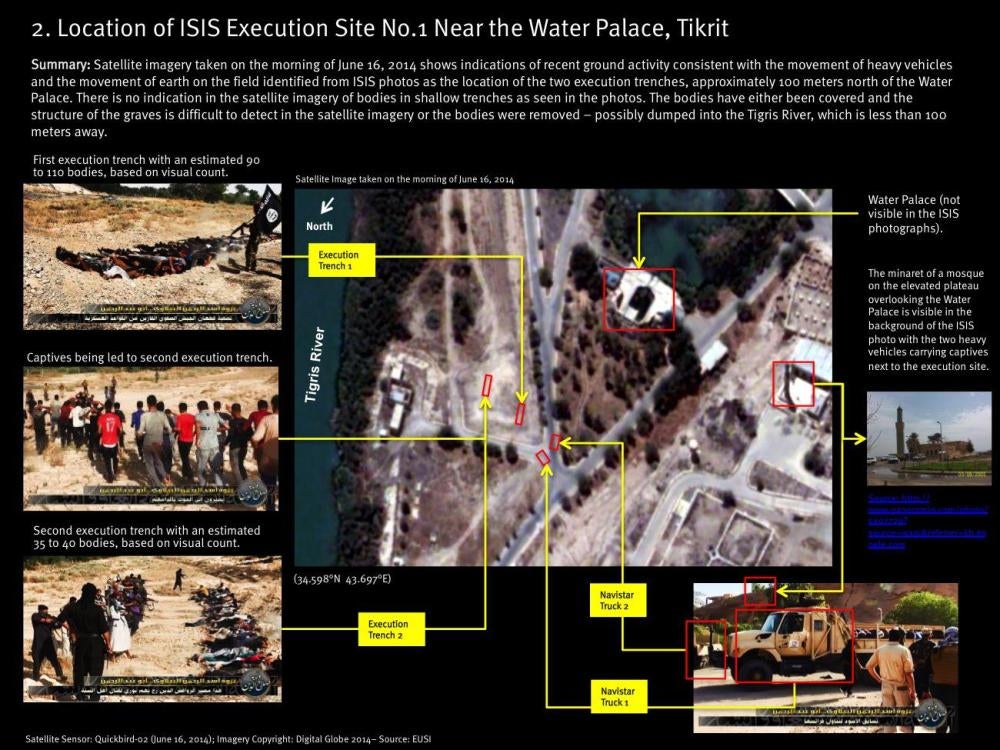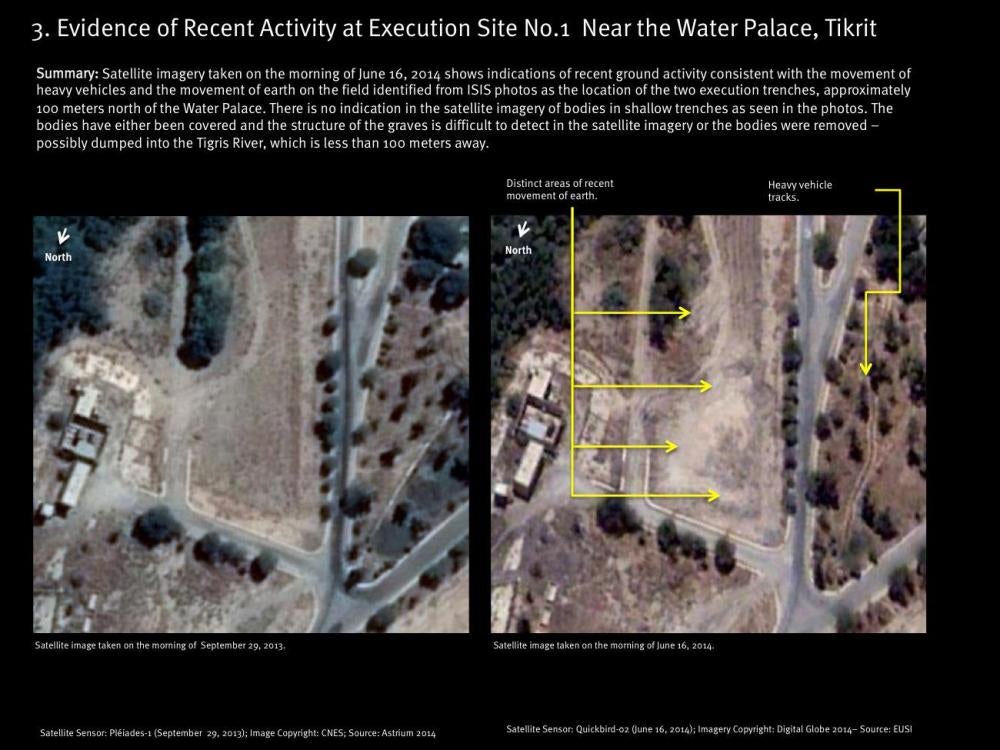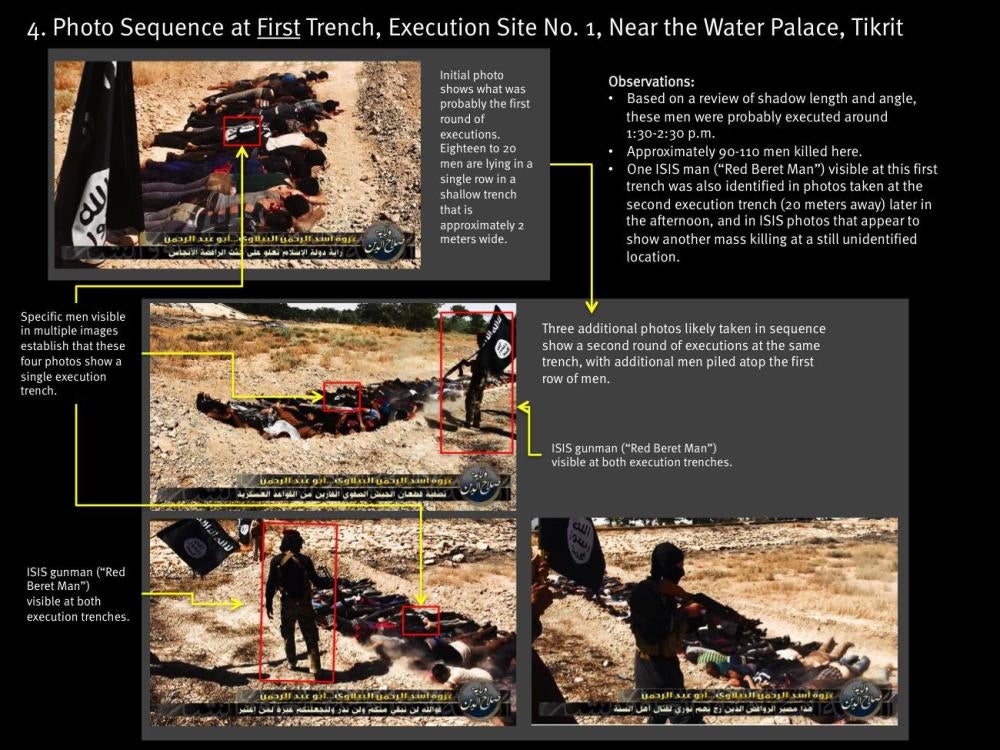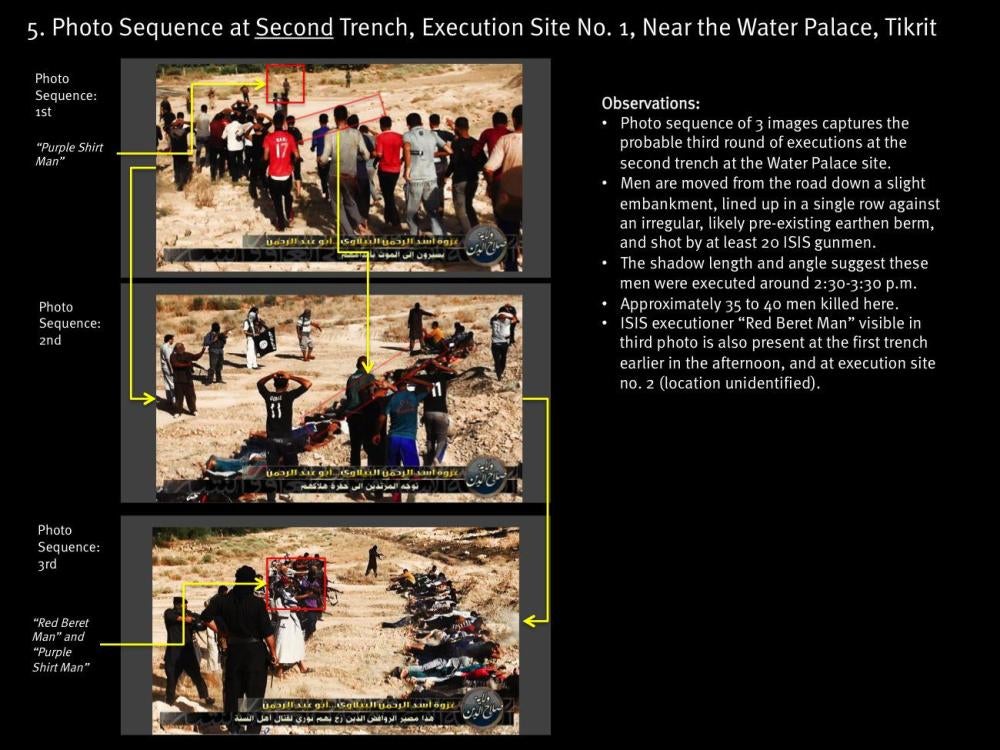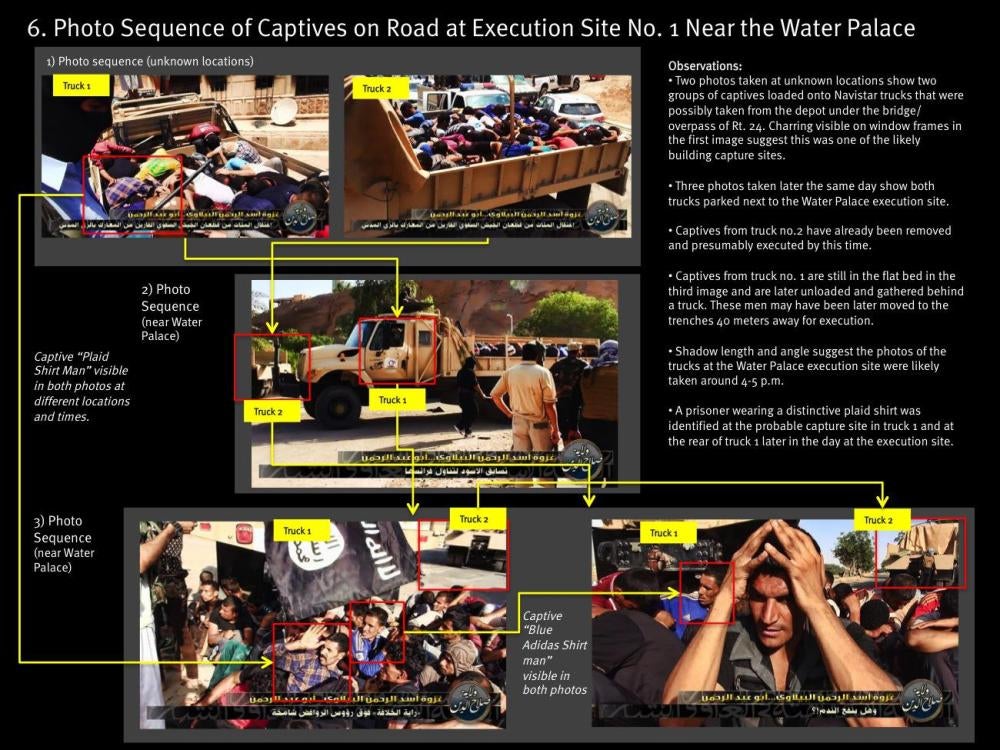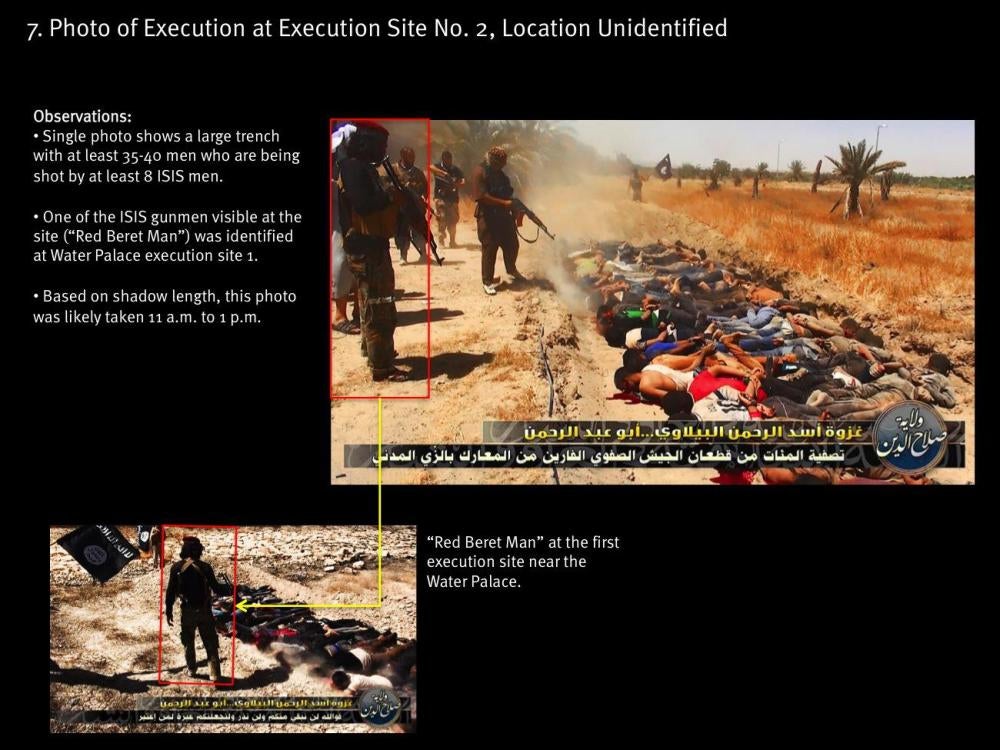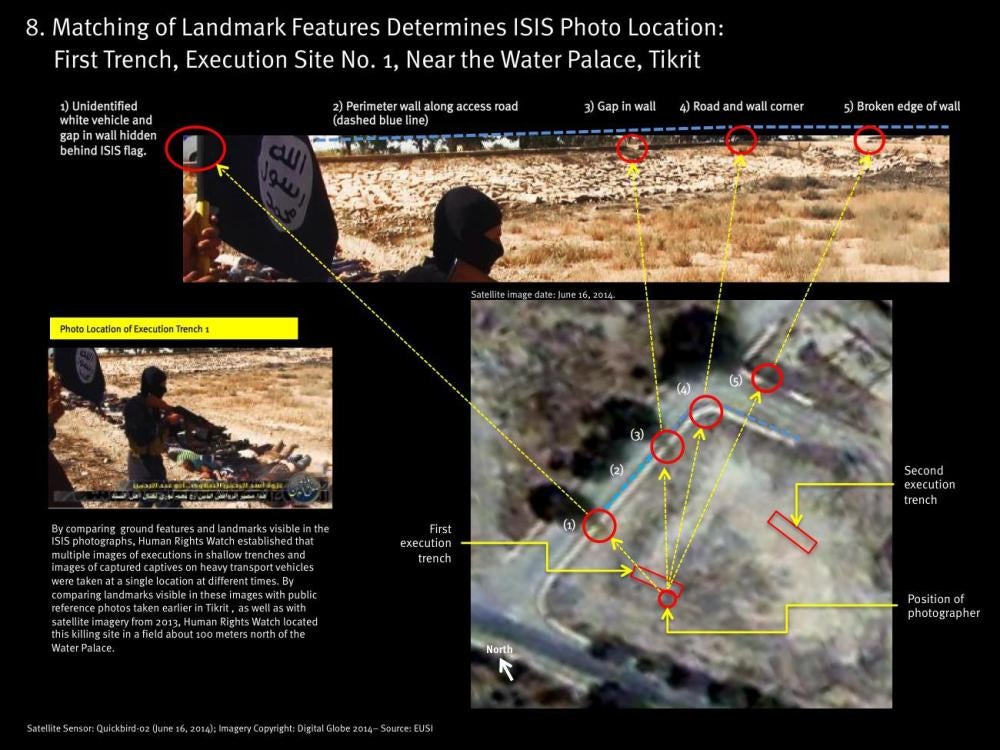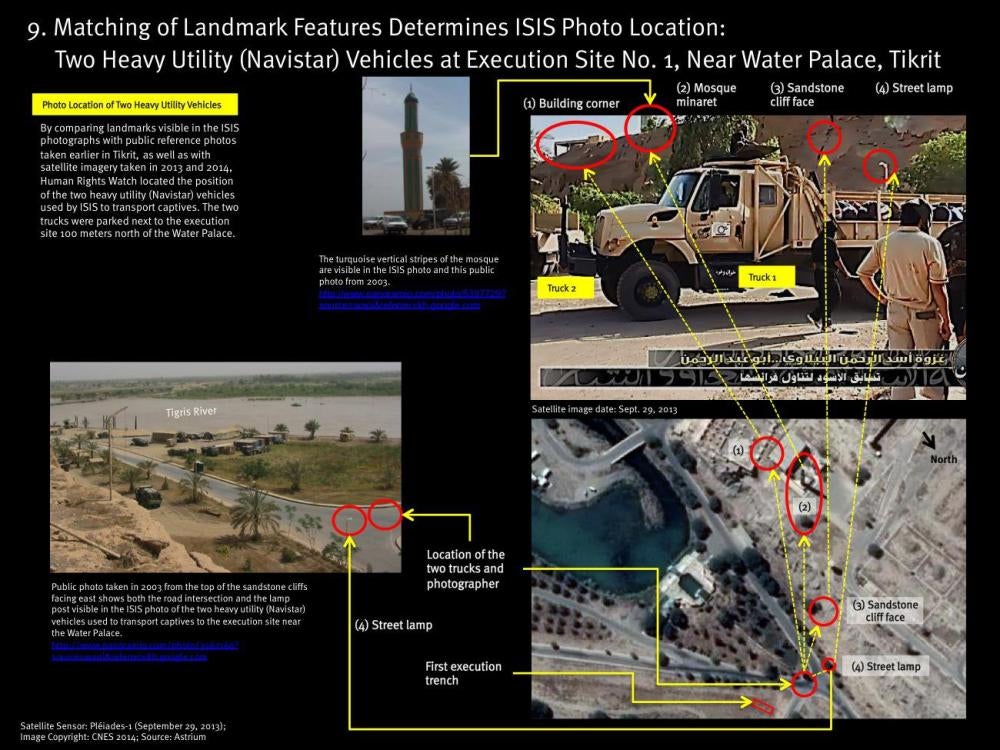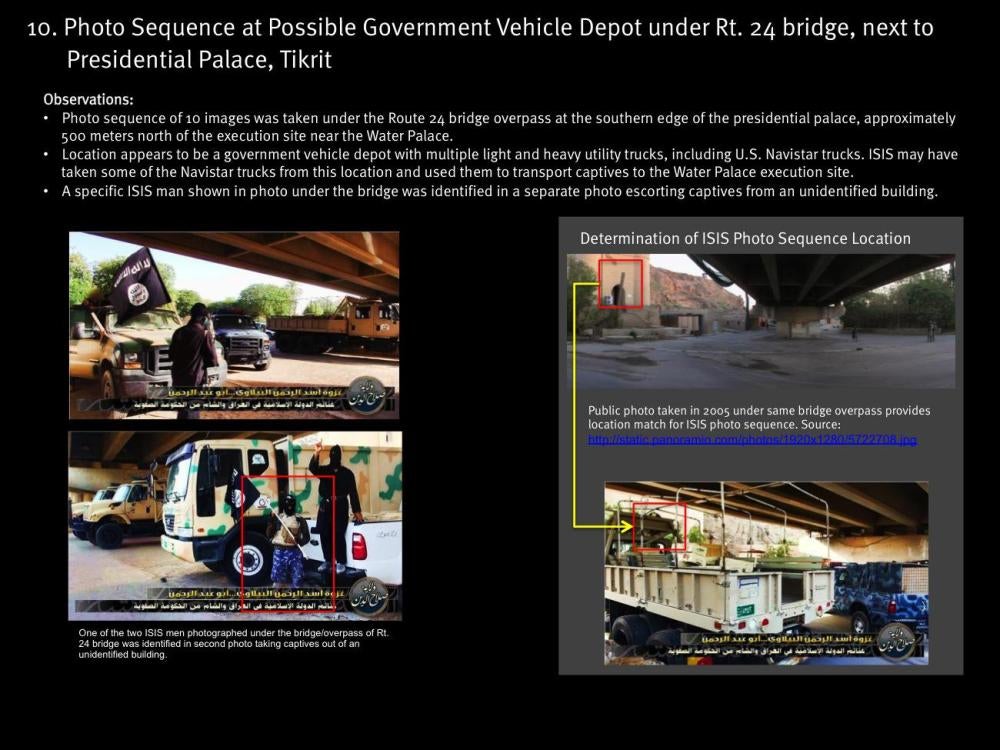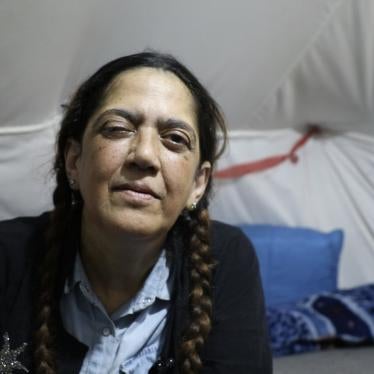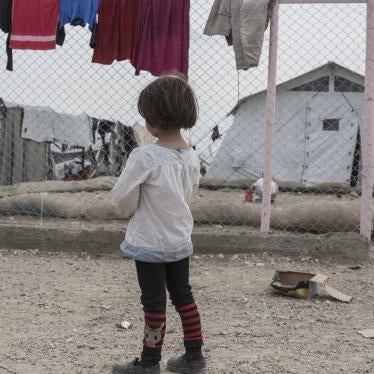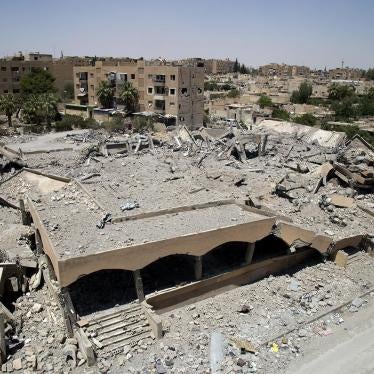Update: New analysis released on September 2, 2014 tripled the death toll to between 560 and 770.
(Baghdad) – Analysis of photographs and satellite imagery strongly indicates that the Islamic State of Iraq and Syria (ISIS) conducted mass executions in Tikrit after seizing control of the city on June 11, 2014.
The analysis suggests that ISIS killed between 160 and 190 men in at least two locations between June 11 and 14. The number of victims may well be much higher, but the difficulty of locating bodies and accessing the area has prevented a full investigation, Human Rights Watch said.
On June 12, ISIS claimed to have executed 1,700 “Shi’a members of the army” in Tikrit. Two days later, it posted to a website photographs with groups of apparently executed men. On June 22, Iraq’s human rights minister announced that ISIS had executed 175 Iraqi Air Force recruits in Tikrit.
“The photos and satellite images from Tikrit provide strong evidence of a horrible war crime that needs further investigation,” said Peter Bouckaert, emergencies director. “ISIS apparently executed at the very least 160 people in Tikrit.”
On June 12, ISIS first announced on its now-closed Twitter feed that it had “exterminated” 1,700 Iraqi troops. The same day, the group posted videos of hundreds of captured men in civilian clothes, who it claimed had surrendered at the nearby Iraqi Speiker military base. On June 14, ISIS posted roughly 60 photographs, some of which show masked ISIS fighters loading captives in civilian clothes onto trucks and forcing them to lie in three shallow trenches with their hands bound behind their backs. Some of the images show masked gunmen pointing and firing their weapons at these men.
By comparing ground features and landmarks in the photographs released by ISIS, Human Rights Watch established that two of the trenches were at the same location. By comparing these photographs with satellite imagery from 2013 and publicly available photographs from Tikrit taken earlier, Human Rights Watch located the site in a field about 100 meters north of the Water Palace in Tikrit – a former palace of Saddam Hussein next to the Tigris River. The location of the third trench has not been identified.
Human Rights Watch also reviewed satellite imagery of the area recorded on the morning of June 16. The imagery does not reveal evidence of bodies at the site with the two trenches, but does show indications of recent vehicle activity and surface movement of earth that is consistent with the two shallow trenches visible in the ISIS photos. Without visiting the site it is impossible to know if bodies are buried there or were moved.
On June 22, the Iraqi human rights minister, Mohamed Shia Sudani, said at a news conference that the bodies of some of the 175 air force recruits who had been killed were thrown into the Tigris River and that others were buried in a mass grave. A spokesman for the minister confirmed that statement to Human Rights Watch on June 23.
An Iraqi security official said that as many as 11 bodies of the executed recruits had been recovered from the Tigris River downstream from the execution site.
The execution photographs that ISIS distributed suggest that gunmen killed the men at the site in at least three groups. The photographs show one group of men lying in one trench and a second group of men lying on top of the first. A third group of men is seen lying in a second trench.
Based on a count of the bodies visible in the available photographs, Human Rights Watch estimates that ISIS killed between 90 and 110 men in the first trench and between 35 and 40 men in the second.
A preliminary review of the shadow length and angle in the photographs suggests the two groups of men in the first trench were possibly executed around 1:30 to 2:30 p.m. The men in the second trench were possibly executed around 2:30 to 3:30 p.m.
Photographs from ISIS show a fourth group of approximately 30 to 40 prisoners on, and later next to, one of the two transport trucks on the main road between the execution site and the Water Palace. The photos were probably taken later that day, between 4 and 5 p.m.
One of the photographs that ISIS distributed suggests that the group killed prisoners at a second site around the same time, but Human Rights Watch has been unable to locate that site. That photograph shows a large trench with between 35 and 40 prisoners being shot by at least 8 ISIS fighters. Based on the shadow length and angle, the photograph was probably taken between 11 a.m. and 1 p.m. One of the ISIS gunmen visible at that site was also visible in photographs from the killing site with the two trenches near the Water Palace.
The photographs and satellite imagery strongly suggest that ISIS transported its captives by trucks to the two killing sites. Human Rights Watch identified the same ISIS fighters and captured men in multiple photographs, including captives who were photographed in trucks and then again being unloaded from the same trucks next to the execution site at the Water Palace.
Human Rights Watch spoke with one man who said he fled Tikrit after the killings. The man said he watched from the rooftop of his home in the Hay al-Qadsia neighborhood in the late afternoon just after ISIS arrived as armed members of ISIS loaded hundreds of captured men onto trucks and drove them away:
I saw them with my own eyes. It was late afternoon. It was a long line. I saw about 10 armed gunmen with their guns pointed at the line of men, walking them to military trucks. Some of the gunmen had masks and others showed their faces. The [captured] men were not handcuffed. They wore civilian clothes.
The man said he did not know where the men took their captives and could not remember the exact date. Tikrit residents told him later they saw bodies floating in the Tigris, he said.
During an armed conflict, the murder of anyone not taking an active part in hostilities, including members of armed forces who have laid down their arms and those in detention, is a war crime. Murder, when systematic or widespread and committed as part of a deliberate policy of an organized group, can be a crime against humanity. Both war crimes and crimes against humanity are considered international crimes, with criminal liability attaching to those who commit or order the crime, but also those who assist, and commanders who should have known of the crime but fail to prevent it.
Human Rights Watch has previously documented serious crimes by ISIS in other areas of Iraq and Syria, including car and suicide bomb attacks in civilian areas, summary executions, torture in detention, discrimination against women, and destruction of religious property. The evidence documented by Human Rights Watch strongly suggests that some of these acts may amount to crimes against humanity.
“ISIS is committing mass murder, and advertising it as well,” Bouckaert said. “They and other abusive forces should know that the eyes of Iraqis and the world are watching.”
